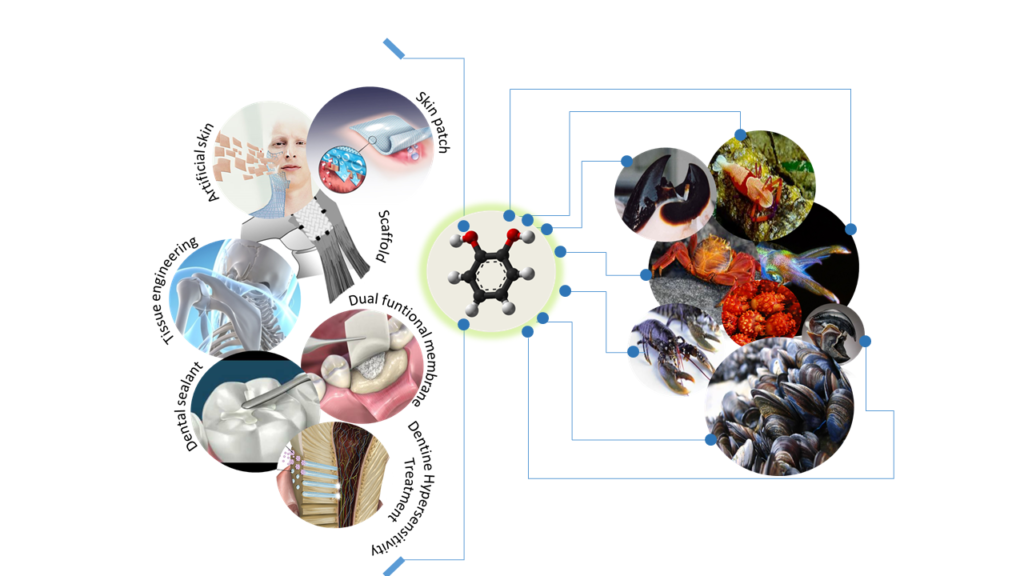RESEARCH
Laboratory for Biological, Biomimetic, Eco-friendly Materials
Biological Materials & Biomimetic materials

Joining biology and Material Science
Biological materials are natural materials that are produced by living organisms. Biological materials have developed to fit the purpose of living organisms and optimized for numerous years.
Wet-environment for biological materials has much common with the human body. Both systems are naturally saline, experience variation of control over fluid flow, fouling by flowing via macromolecules, and degradation of organics via cellular-level activities. These are just a few examples of matching biological and mechanical events both present in the human body and the wet environment. Understanding physics and chemistry of biomaterials in the wet-environments will provide the scientists useful insights for designing biomaterials for biomedical applications. Isolation and characterization of the load bearing precusors in biomaterials is a prerequisite for mimicking those materials. Therefore, we seek to understand the properties and performance of biological materials of living organisms in nature. Biophysical and biochemical properties of the biological materials have been investigated with various mechanical and biochemical techniques. The interfaces between the materials have been studied with Electron microscopes (SEM, TEM), X-rays (Synchrotron, XRD), Atomic Force Microscope (AFM), and Surface Forces Apparatus (SFA). we also aim to isolate, to produce, and to characterize of novel load bearing biomaterials from marine organisms and material properties of these biomaterials will be further investigated by collaborative research with materials and physics departments
Especially, intermolecular interactions between the materials interfaces play a pivot role for biological materials assembly. An apparatus most often used for direct measurements of the forces between two interfaces is the surface forces apparatus (SFA). The SFA is an instrument that measures the magnitude and distance of the intermolecular forces between two surfaces by approaching, retracting, or shearing from one another.

